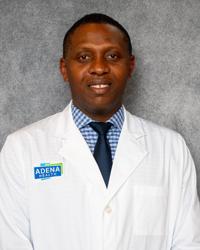Why choose Adena Breast Cancer Services?
Adena's Breast Cancer Services offer a streamlined and efficient approach to managing breast health. When women undergo a breast biopsy following an abnormal mammogram, they benefit from a well-coordinated care process. If cancer is detected, patients are quickly scheduled for a follow-up appointment at the clinic, usually within a week. At this appointment, they not only receive their results but also have the chance to meet with a multidisciplinary team of specialists, including surgeons, medical oncologists, and radiation oncologists, conveniently located in one place on the same day.
For those with benign biopsy results, the care process is equally attentive. These women are contacted by a nurse practitioner or a designated healthcare professional with reassuring news. They are then invited to the breast cancer risk reduction clinic, where they can have an in-depth discussion about their biopsy results, understand any potential risk factors for cancer, and explore strategies to lower their risk of developing breast cancer. Adena's Breast Cancer Services emphasizes not just expert medical care but also patient education and preventive health, making it an excellent choice for women's breast health needs.
Breast Health
It is estimated that about 13 percent of women born in the United States today will develop breast cancer at some time in their lives. However, as treatments improve and technology advances, the death rate for breast cancer is steadily going down. According to the American Cancer Society, the five year survival rate for breast cancer is 90 percent.
- Breast cancer is the most common cancer among women in the U.S., other than skin cancer
- The five-year survival rate when breast cancer is detected in stage one is more than 90%
- The risk for developing breast cancer increases with age
- Prompt access to care in the Appalachia Region has been recognized as a barrier to care and as why women in this region are often diagnosed with more advanced stages of breast cancer
- While there is an increase in breast cancer nationwide, death associated with the disease is on the decline because of early detection
Women who have a breast biopsy after an abnormal mammogram are automatically scheduled for a follow-up appointment at the clinic about one week after the biopsy.
That’s when women whose biopsies show that cancer is present are informed of the results. While they’re at the clinic, they will meet with all of the clinicians they need to speak with about next steps — including a surgeon, medical oncologist, and radiation oncologist — all in one location, all in one day.
If a woman’s biopsy shows that whatever was spotted on the mammogram is not cancer, she receives a phone call from a nurse practitioner or Kemper with the good news. These women are offered an appointment at the breast cancer risk reduction clinic, where they can meet with a nurse practitioner to discuss the results. They also will discuss any risk factors for cancer and steps to lower the risk of developing breast cancer.
Multidisciplinary & Personalized Care
The Multidisciplinary Breast Cancer Clinic is an innovative program dedicated to the treatment of all types of breast cancer. We provide patients with an experienced team of oncologists, surgeons, nurses, patient navigators, pathologists, radiologists, and a palliative care physician to discuss the best course of treatment for each patient. Our team works collaboratively to provide each patient with a personalized, compassionate plan of care.
When the patient arrives for their first appointment they will be greeted by the patient navigator. The navigator coordinates a meeting with a surgeon, followed by a radiation oncologist, and a medical oncologist. The team will then review the patient's medical history, family history, biopsy and mammogram results, and any other laboratory or imaging results to develop a treatment plan for the specific diagnosis.
Patients then receive an individualized plan of care that is consistent among all of the physicians and providers who will care for them. Once the final care plan is selected the Nurse Navigator will coordinate appointments for the patient to begin treatment.
The American Cancer Society suggests starting annual mammograms at age 40 if you have normal risk. But if you have high-risk factors, such as a strong family history of breast cancer, your doctor might recommend a different screening schedule.
If you are assessed as having a higher-than-average risk of developing breast cancer, we will work with your physician to develop a personalized comprehensive plan of care. This focused care plan may include:
- Lifestyle changes: Weight reduction, regular exercise, limited alcohol and tobacco intake, among other things
- Increased surveillance: More frequent mammograms and, in some situations, breast MRI
- Chemoprevention: A drug such as Tamoxifen or Evista may be used to help reduce the risk of breast cancer
- BRCA genetic testing : This option helps determine if you have an inherited susceptibility to breast cancer
- Referral to a surgeon: For further evaluation if needed
Common Symptoms of Breast Cancer
- A lump or thickening in or near the breast
- Changes in the size or shape of the breast
- A nipple turned inward into the breast
- Discharge, sometimes bloody, from the nipple
- Changes in skin color or texture on the breast, nipple or areola
Because breast cancer usually doesn't show symptoms in its early stages, early detection is important for breast health. Often, some symptoms are not due to cancer but could be related to another health problem. If you have any of these symptoms, you should tell your doctor so that proper diagnoses and treatment can begin.
Some women believe that if breast cancer doesn’t run in their family, they are safe. But fewer than 10 percent of breast cancer cases have a genetic link. There are many other factors that may increase your risk of breast cancer.
At the Breast Cancer Risk Reduction Clinic at Adena, we create customized plans that tell you your risk and outline a care plan to help you be your healthiest. If you are at high risk, you may need mammograms earlier or more frequently or you may need a different type of test, such as a breast MRI.
There are at least 25 risk factors beyond a genetic link—including just being a woman—that increase the risk of getting breast cancer. Some of these include:
- Family History: Even without a genetic link, women who have a family history of cancer are at increased risk. One immediate family member with breast cancer doubles a woman’s risk.
- Age: A woman’s chance of getting breast cancer nearly doubles between ages 50 and 75.
- Dense Breasts: It is thought that women with dense breasts (as identified on a mammogram) are four to five times more likely to get breast cancer.
- Children: Having a first child after age 35 increases a woman’s risk, while having children younger and breastfeeding reduces a woman’s risk.
- Hormone Replacement Therapy: Use of artificial estrogen and progesterone after menopause increases a woman’s risk, but this risk can be minimized by using low doses for shorter periods.
As you consider your personal risk, you can start by taking the National Cancer Institute’s Breast Cancer Risk Assessment Tool. Many experts say that this tool is only the beginning. Every woman should have a thorough discussion with her doctor about her personal health history and risk of breast cancer.
Adena Breast Cancer Risk Reduction Clinic
If you would like to learn more about your risk of breast cancer or you have breast cancer, the Adena Breast Cancer Risk Reduction Clinic can help. We provide all women:
- Individualized plan of care based on your risk factors and family history
- Care that follows guidelines established by the National Comprehensive Cancer Network
- Digital mammography available at five convenient Adena facilities
- Detailed imaging without radiation through Breast MRI
- Early intervention to improve outcomes for a suspected cancer
- Timely monitoring to help alleviate a woman’s anxiety
- Quick and organized access to care
- Close monitoring of lumps or changes in the breast
- Ongoing communication with your healthcare provider
- Access to a nurse navigator to assist you through your care plan
Screenings & Diagnosis
There are a number of types of exams to determine if cancer is present. Below is a list and brief description of the most common types of exams.
Do you know when you need a breast cancer screening? Download our screening guide!
Clinical Breast Exam: During a clinical breast exam, your doctor checks your breasts. Your doctor is looking for signs such as differences in size or shape between your breasts, the skin of your breasts is checked for abnormal signs, your nipples are checked for fluid, lymph nodes near the breast are checked to see if they are enlarged and you will also be checked for lumps. If a lump is found, it will be checked for size, shape, and texture.
Mammogram: Mammograms, which are pictures of the breast tissue, can usually detect a breast lump before it can be felt. Along with lumps, mammograms can also show a cluster of calcium, called micro-calcifications. These can be from cancerous or precancerous cells, or other conditions. Further tests may be needed to determine if abnormal cells are present.
Additional Imaging Tests: Sometimes your doctor may order additional imaging tests. This occurs usually if an abnormal area is found during initial testing. These tests may include an Ultrasound or MRI. An ultrasound device sends out sound waves and a computer uses the sound waves to create a picture that will show more information about the lump. A MRI uses a powerful magnet linked to a computer, which creates detailed pictures of breast tissue, which will illustrate a variation between normal and diseased tissue.
Biopsy: A biopsy is the final test to determine if you have cancer. This is the removal of tissue to look for cancer cells. There are several types of biopsies, ranging from fine-needle to surgical. Depending on where the fluid or tissue is, your doctor will select which biopsy option will work best in your case.
Self-Examination: Although a breast self-exam is not recommended as a screening tool for breast cancer, knowing how your breasts normally look and feel can help you detect changes in your breasts. The Susan G. Komen Foundation lists the following changes in your breasts as possible warning signs for breast cancer:
- Lump, hard knot or thickening inside the breast or underarm area
- Swelling, warmth, redness or darkening of the breast
- Change in the size or shape of the breast
- Dimpling or puckering of the skin
- Itchy, scaly sore or rash on the nipple
- Pulling in of your nipple or other parts of the breast
- Nipple discharge that starts suddenly
- New pain in one spot that doesn’t go away
Genetic Testing: If someone in your immediate family has been diagnosed with breast cancer, you may be wondering about your own risk for developing the disease. It is estimated that just 5 to 10 percent of all breast cancers in the United States are hereditary, according to the National Institutes of Health. The most common genes involved are BRCA1 and BRCA2, known as tumor suppressors. Women who inherit a mutation of one of these genes are five times as likely to develop breast cancer as a woman without the mutation, reports the National Cancer Institute. A study showed that 60 percent of women with this BRCA1 or BRCA2 mutation will develop breast cancer, compared with 12 percent of women in the general population.
Our Providers
View All
William Wilson, MD

Jeffrey Rose, MD
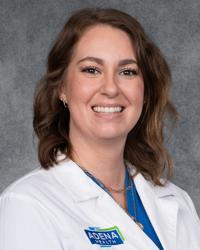
Abigail Johnson, CNP
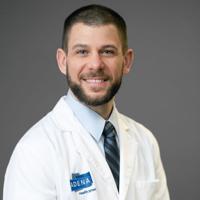
Gregory Thompson, MD
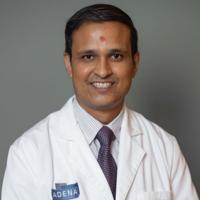
Sandipkumar Patel, MD
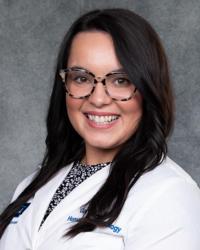
Carissa Mitchell, CNP
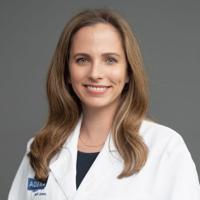
Sara Singer, MD
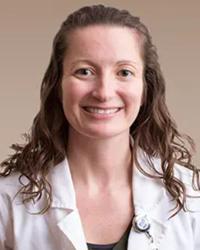
Angela Wellman, CNP
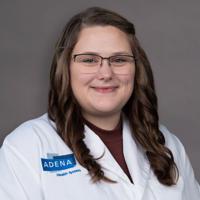
Danelle Rhoads, CNP
